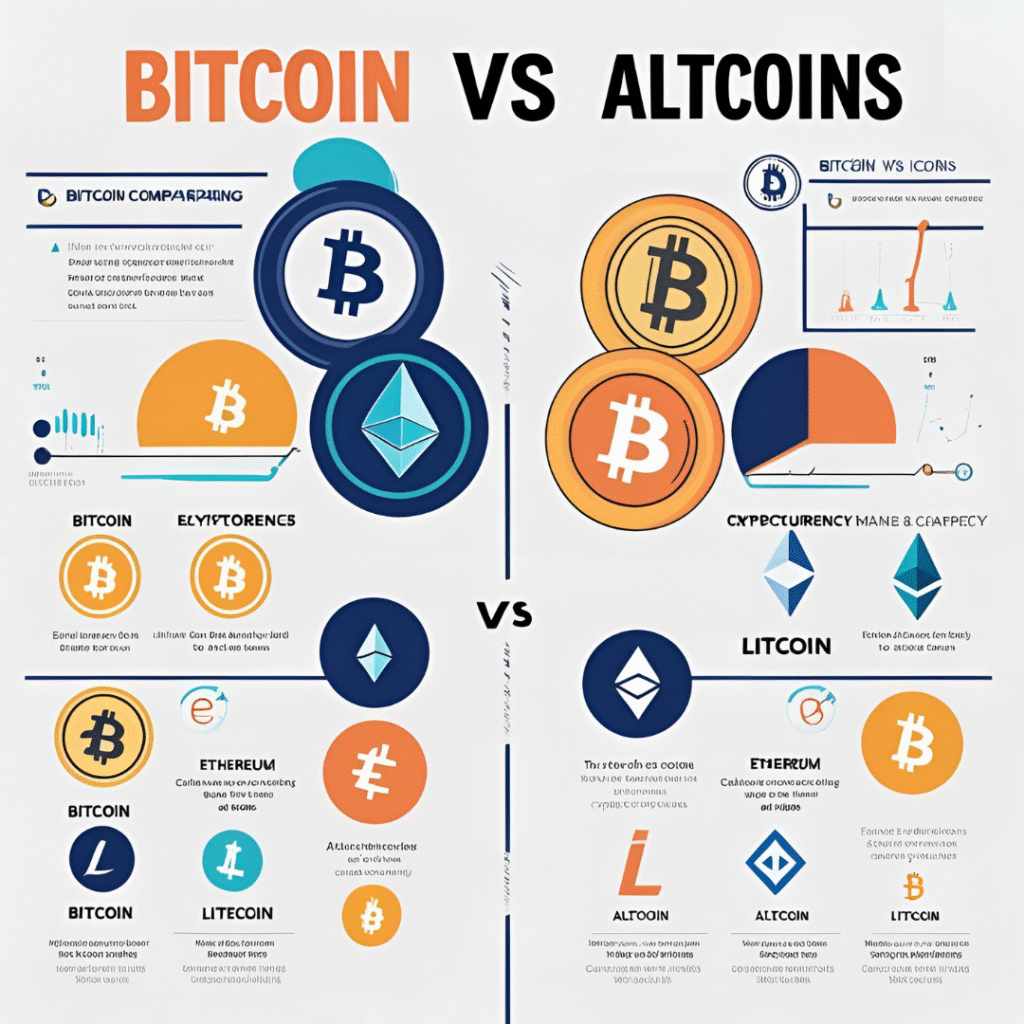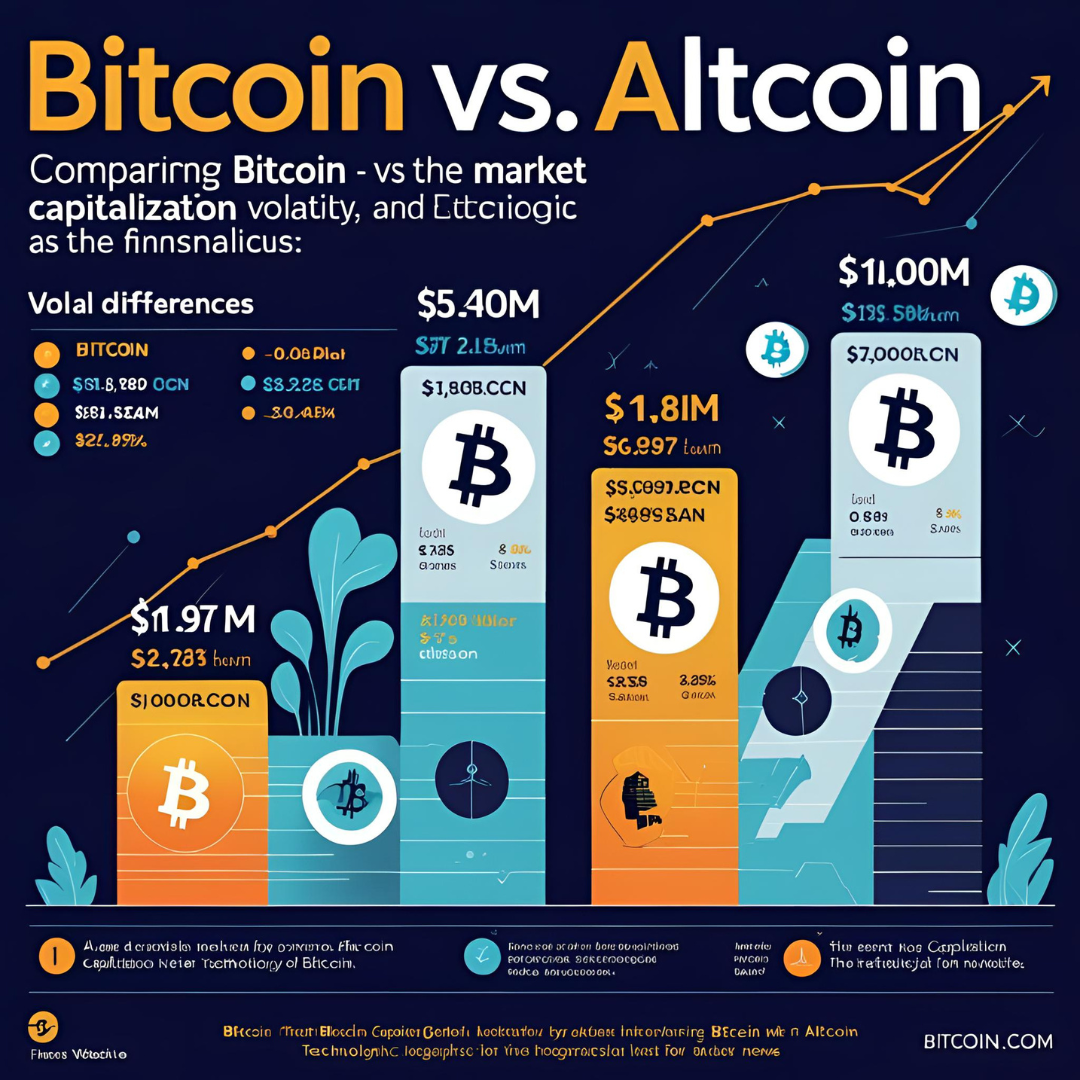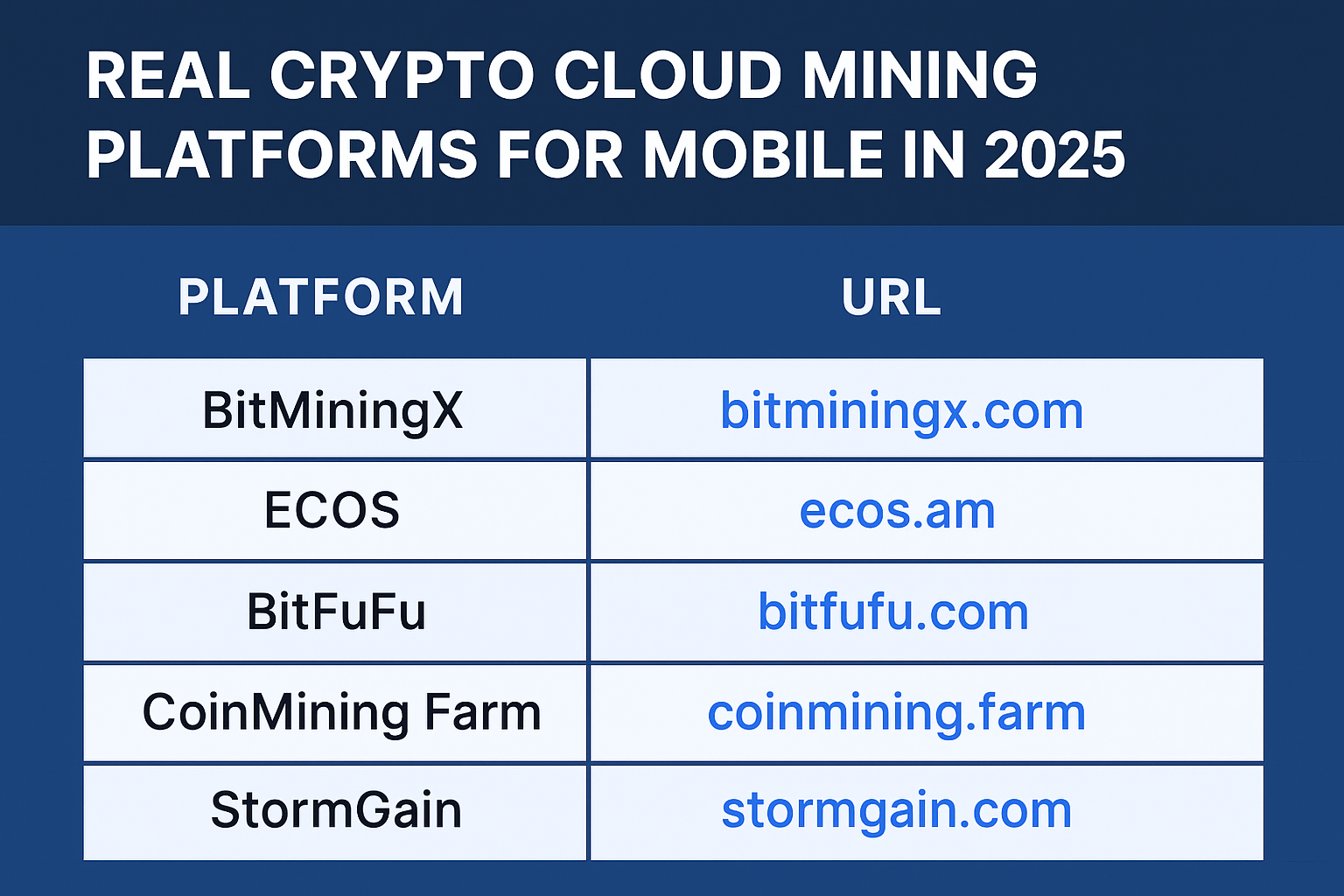When comparing Bitcoin vs. altcoins, investors encounter distinct differences in technology, market performance, and potential rewards. Bitcoin, as the first cryptocurrency, boasts stability and a capped supply, making it a favored choice for long-term investment. In contrast, altcoins present diverse innovations and can offer higher short-term gains, albeit with greater volatility. Each carries unique risks and opportunities, suggesting that thorough evaluation is essential for investment decisions. Further exploration reveals deeper insights into this complex landscape.
Key Takeaways
- Bitcoin is the original cryptocurrency, offering stability and a strong market position, often referred to as “digital gold.”
- Altcoins provide diverse technologies and use cases, appealing to investors seeking innovation beyond Bitcoin’s capabilities.
- Bitcoin’s proof-of-work model ensures security, while many altcoins utilize proof-of-stake for enhanced efficiency and scalability.
- Market trends show altcoins can outperform Bitcoin during bull markets but may be more volatile and riskier during downturns.
- Diversifying with altcoins can offer potential short-term gains, but thorough research is essential to navigate the risks effectively.
Understanding Bitcoin: The Pioneer of Cryptocurrency
Bitcoin, often regarded as the cornerstone of the cryptocurrency landscape, was introduced in 2009 by an anonymous entity known as Satoshi Nakamoto. This pioneering digital currency operates on a decentralized network, utilizing blockchain technology to guarantee secure transactions and maintain a public ledger. Unlike traditional currencies, Bitcoin is not controlled by any government or financial institution, which fosters a sense of autonomy among its users. Its limited supply, capped at 21 million coins, contributes to its scarcity and potential value appreciation. As the first cryptocurrency, Bitcoin has set foundational principles that many subsequent cryptocurrencies have attempted to emulate or improve upon. Understanding Bitcoin’s unique features is essential for anyone traversing the complex terrain of Bitcoin vs. altcoins in today’s evolving financial landscape.
Exploring Altcoins: Diversity in the Crypto Market
The cryptocurrency market has evolved considerably since the inception of Bitcoin, leading to the emergence of a diverse array of alternative coins, commonly referred to as altcoins. These altcoins encompass various technologies, use cases, and communities, catering to a broad spectrum of investor interests and needs. While Bitcoin remains the dominant player, altcoins like Ethereum, Cardano, and Solana offer innovative solutions and functionalities beyond simple transactions. This diversity encourages experimentation and fosters a sense of belonging among users who seek specific benefits or features not available in Bitcoin. As the market continues to mature, understanding the distinctions and potential of altcoins becomes essential for investors traversing the complex landscape of Bitcoin vs. altcoins.
Comparing Technology: Bitcoin Vs. Altcoins
While Bitcoin has set the standard for cryptocurrency with its pioneering blockchain technology, altcoins have emerged with diverse technological advancements that challenge and complement its framework. Bitcoin’s proof-of-work consensus algorithm guarantees security but faces scalability issues and high energy consumption. In contrast, many altcoins, such as Ethereum, utilize proof-of-stake models that enhance efficiency and reduce costs.

Additionally, innovations like smart contracts and decentralized applications, primarily found in altcoins, expand the potential use cases of blockchain technology beyond mere transactions. Moreover, privacy-focused coins like Monero prioritize user anonymity, addressing concerns that Bitcoin’s transparency may raise. This technological diversity among Bitcoin and altcoins fosters a rich ecosystem, inviting users to explore varied functionalities within the cryptocurrency landscape.
Market Performance: Historical Trends and Analysis
Market performance in the cryptocurrency sector has exhibited significant fluctuations since Bitcoin’s inception in 2009, establishing a complex landscape for investors. Over the years, Bitcoin has maintained a dominant market position, often seen as a benchmark for evaluating altcoins. Historical trends indicate that during bull markets, altcoins frequently outperform Bitcoin, driven by investor enthusiasm and speculative trading. Conversely, in bearish phases, altcoins typically experience sharper declines, highlighting their volatility. The correlation between Bitcoin and altcoins remains a pivotal aspect of market dynamics, shaping investment behaviors. Understanding these historical patterns is essential for investors maneuvering the cryptocurrency landscape, as they reveal opportunities and risks inherent within Bitcoin vs. Altcoins, ultimately guiding informed decision-making.
Investment Strategies: Choosing Between Bitcoin and Altcoins
Investors must carefully evaluate their objectives and risk tolerance when deciding between Bitcoin and altcoins, as each category presents unique advantages and challenges. Bitcoin, often viewed as a digital gold, offers stability and widespread acceptance. In contrast, altcoins can provide high growth potential and innovative features.
To guide their investment strategies, individuals may consider the following factors:
- Market Position: Bitcoin’s dominance versus altcoin innovations.
- Volatility: Risk versus reward in fluctuating markets.
- Use Case: Practical applications of altcoins versus Bitcoin’s established utility.
- Community Support: The strength of user engagement and developer backing.
Risks and Rewards: Navigating the Crypto Landscape
Maneuvering the crypto landscape involves understanding the intricate balance between risks and rewards associated with Bitcoin and altcoins. Bitcoin, often viewed as the gold standard of cryptocurrency, offers relatively lower volatility but still poses risks tied to regulatory changes and market sentiment.

In contrast, altcoins can present opportunities for higher returns, yet they typically come with increased volatility and the potential for significant losses. Investors must carefully evaluate the fundamentals of each altcoin, as many lack the established track record of Bitcoin. By weighing these factors, individuals can make informed decisions that align with their risk tolerance and investment goals. Ultimately, the choice between Bitcoin and altcoins requires a thoughtful approach to traversing the complexities of the crypto market.
Future Trends: What Lies Ahead for Bitcoin and Altcoins
As the landscape of cryptocurrencies evolves, both Bitcoin and altcoins are poised to be influenced by significant technological advancements and impending regulatory changes. These factors could reshape market dynamics, potentially altering investor sentiment and adoption rates. Understanding these future trends is essential for stakeholders in the ongoing discussion of Bitcoin vs. Altcoins.
Technological Advancements Impacting Crypto
While the evolution of cryptocurrency continues to gain momentum, technological advancements are poised to greatly influence the future landscape of Bitcoin and altcoins. Innovations in blockchain technology, scalability solutions, and interoperability will shape how these digital currencies operate and are perceived.
Key advancements include:
- Layer 2 Solutions: Enhancing transaction speeds and reducing costs for Bitcoin and altcoins.
- Smart Contracts: Enabling decentralized applications that extend utility beyond simple transactions.
- Cross-Chain Compatibility: Allowing seamless interaction between different cryptocurrencies, fostering inclusivity.
- Decentralized Finance (DeFi): Creating new financial systems that empower users and challenge traditional banking.
As these technologies evolve, they will not only enhance functionality but also drive community engagement, shaping a more interconnected crypto ecosystem.
Regulatory Changes and Challenges
Regulatory changes are poised to greatly impact the dynamics of both Bitcoin and altcoins, shaping their adoption and market stability. As more governments worldwide consider frameworks to regulate cryptocurrencies, the landscape is becoming increasingly complex. Stricter regulations may enhance consumer protection and legitimize the market, potentially increasing institutional investment in both Bitcoin and altcoins. Conversely, heavy-handed regulations could stifle innovation, pushing developers and users towards decentralized platforms. Additionally, compliance costs may disproportionately affect smaller altcoins, leading to a consolidation of market power among established cryptocurrencies. As these regulatory challenges unfold, stakeholders must navigate this evolving environment to guarantee sustainable growth, fostering a sense of community and belonging among cryptocurrency enthusiasts. Ultimately, the regulatory landscape will markedly influence the ongoing Bitcoin vs. altcoins debate.
Frequently Asked Questions
How Do Transaction Fees Differ Between Bitcoin and Altcoins?
Transaction fees vary considerably between Bitcoin and altcoins. Bitcoin’s fees can surge during high demand, while many altcoins offer lower, more stable fees. This disparity influences users’ choices based on cost-effectiveness and transaction speed.
What Are the Environmental Impacts of Bitcoin Versus Altcoins?
The environmental impacts of Bitcoin versus altcoins vary considerably. Bitcoin’s energy-intensive mining process contrasts with many altcoins, which often utilize less resource-intensive mechanisms, leading to differing carbon footprints and overall ecological consequences in the cryptocurrency landscape.
How Does Community Support Influence Bitcoin and Altcoin Projects?
Community support greatly influences the success of cryptocurrency projects. Strong, engaged communities foster innovation, enhance credibility, and encourage adoption, impacting both Bitcoin and altcoins. Collaborative efforts often lead to improved features and increased user loyalty in the ecosystem.
What Are the Security Protocols for Bitcoin and Altcoins?
Security protocols for cryptocurrencies involve cryptographic techniques, consensus mechanisms, and network validation processes. While Bitcoin primarily uses proof-of-work, many altcoins adopt diverse methods, such as proof-of-stake, enhancing security according to their unique frameworks and community needs.
How Do Regulatory Frameworks Affect Bitcoin Compared to Altcoins?
Regulatory frameworks considerably impact both Bitcoin and altcoins, shaping market dynamics, investor confidence, and compliance requirements. While Bitcoin often enjoys broader acceptance, altcoins may face stricter scrutiny, influencing their adoption and long-term viability in various jurisdictions.
Conclusion
In the ongoing Bitcoin versus altcoin debate, each offers distinct advantages and challenges that merit careful consideration. Bitcoin, with its established reputation and market dominance, serves as a reliable store of value. Conversely, altcoins present diverse opportunities for innovation and potential high returns. Investors must weigh the stability of Bitcoin against the growth prospects of altcoins, balancing risk and reward while staying informed about market dynamics to make strategic investment decisions in the evolving cryptocurrency landscape.




